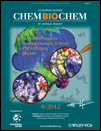
CHEMBIOCHEM
Scope & Guideline
Connecting ideas to shape the future of organic chemistry.
Introduction
Aims and Scopes
- Chemical Biology:
Research that explores the chemical underpinnings of biological systems, including the design and synthesis of small molecules, peptides, and proteins that interact with biological targets. - Enzyme Engineering:
Studies involving the modification of enzymes to enhance their catalytic properties, substrate specificity, and stability for various applications, including biocatalysis and drug development. - Bioconjugation Techniques:
Research on methods for conjugating biomolecules with synthetic compounds to create novel therapeutics, diagnostics, and imaging agents. - Nanotechnology in Biology:
Investigations into the use of nanomaterials and nanocarriers for drug delivery, biosensing, and imaging applications. - Chemical Probes and Biosensors:
Development of chemical probes and biosensors for studying biological processes, detecting biomolecules, and monitoring cellular activities. - Synthetic Biology:
Research that involves the design and construction of new biological parts, devices, and systems, as well as the re-engineering of existing biological systems. - Natural Product Chemistry:
Exploration of the chemistry of natural products, including their biosynthesis, structure-activity relationships, and potential therapeutic applications. - Bioorthogonal Chemistry:
Studies focused on chemical reactions that can occur inside living systems without interfering with native biochemical processes, enabling targeted labeling and tracking of biomolecules.
Trending and Emerging
- Artificial Intelligence in Drug Discovery:
There is a growing trend towards the application of AI and machine learning techniques in drug discovery processes, enabling more efficient identification of potential drug candidates and understanding of biological interactions. - Photodynamic Therapy and Imaging:
Increased research on photodynamic therapy and imaging agents reflects a rising interest in therapies that utilize light-activated compounds for targeting and treating diseases, particularly cancer. - CRISPR/Cas9 and Gene Editing Technologies:
The application of CRISPR/Cas9 for gene editing is trending, with studies focusing on its use for therapeutic purposes, including cancer treatment and genetic disease correction. - Microbial and Synthetic Biology Innovations:
Research that combines synthetic biology with microbial systems to create novel biocatalysts and production strains for biofuels, pharmaceuticals, and other valuable compounds is on the rise. - Vaccine Development and Delivery Systems:
Emerging themes in vaccine research, particularly involving new delivery systems and adjuvants, are gaining attention, especially in the context of rapid responses to global health challenges like COVID-19. - Biomolecular Probes and Imaging Techniques:
Advancements in biomolecular probes for real-time imaging and monitoring of cellular processes are increasingly prominent, showcasing the importance of visualizing biological activities in living organisms. - Smart Materials and Responsive Systems:
Research on smart materials that respond to biological stimuli for drug delivery and therapeutic applications is trending, reflecting a shift towards more intelligent and adaptive therapeutic systems.
Declining or Waning
- Conventional Drug Discovery Approaches:
While traditional drug discovery methods remain important, there is a noticeable decline in papers focused solely on classical techniques without integrating modern methodologies, such as computational chemistry or synthetic biology. - Basic Enzyme Kinetics Studies:
Research solely dedicated to fundamental enzyme kinetics appears to be less frequent, as there is a growing preference for studies that combine kinetics with advanced applications, like biocatalysis or synthetic biology. - Static Imaging Techniques:
There is a waning interest in static imaging techniques for biological studies, with a shift towards dynamic and real-time imaging methods that provide insights into cellular processes. - Single-Target Drug Development:
Research focused exclusively on single-target drug development is declining, as there is increasing interest in multi-target and systems biology approaches that consider the complexity of biological systems. - Therapeutic Applications of Natural Products:
While still relevant, the focus on the therapeutic applications of natural products without innovative chemical modifications or novel delivery systems seems to be diminishing.
Similar Journals
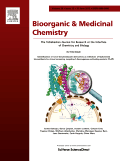
BIOORGANIC & MEDICINAL CHEMISTRY
Transforming Therapeutics with Cutting-Edge ChemistryBIOORGANIC & MEDICINAL CHEMISTRY, published by Pergamon-Elsevier Science Ltd, is a prominent journal in the fields of biochemical research and drug discovery, with an ISSN of 0968-0896 and an E-ISSN of 1464-3391. Established in 1993, it has garnered respect and recognition, evidenced by its categorization in various quartile ranks across 2023, including Q2 in Clinical Biochemistry and Pharmaceutical Science. It holds significant Scopus rankings, placing it in the 75th percentile in Pharmaceutical Science and 74th percentile in Organic Chemistry, highlighting its influential contributions to ongoing research and developments. This journal provides a platform for disseminating advancements in bioorganic and medicinal chemistry, focusing on innovative methodologies, therapeutic advancements, and molecular pharmacology. Although it does not follow an open-access model, it remains a key resource for researchers, professionals, and students aiming to stay at the forefront of scientific discovery in the UK and beyond. The journal’s commitment to enhancing knowledge within the biomedical community makes it an essential read for those passionate about this dynamic field.
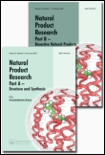
NATURAL PRODUCT RESEARCH
Fostering Insights into Nature's Chemical WondersNATURAL PRODUCT RESEARCH is a distinguished journal published by Taylor & Francis Ltd, dedicated to advancing the field of natural product science through the dissemination of high-quality research. Established in 2003, this journal serves as a pivotal platform for scholars in Analytical Chemistry, Biochemistry, Organic Chemistry, and Plant Science, boasting an impressive categorization including Q2 in Plant Science and Q3 in the other disciplines for 2023. With a current Scopus ranking that highlights its significance within various scientific communities, NATURAL PRODUCT RESEARCH reflects the complexities and innovations associated with natural compounds and their applications. Researchers, professionals, and students will find valuable insights and breakthroughs that contribute to the understanding of bioactive compounds and their roles in health and environmental sustainability. Access options are available, ensuring that the latest findings are accessible to a global audience. As this journal continues to publish until 2024, it remains an essential resource for those at the forefront of natural product research.

Molecular Systems Design & Engineering
Empowering Researchers to Tackle Global ChallengesMolecular Systems Design & Engineering, published by the esteemed Royal Society of Chemistry, stands at the forefront of interdisciplinary research focused on the integration of molecular systems and engineering principles. With its ISSN 2058-9689 and a robust impact within various scientific domains, this journal not only facilitates the advancement of knowledge in fields such as Biomedical Engineering, Chemical Engineering, and Materials Chemistry, but also fosters collaborative innovations that address contemporary challenges in energy and manufacturing processes. Its recent rankings, including Q1 categorization in Critical areas of Chemical Engineering and Materials Chemistry, underscore its significance and influence within the scientific community, making it a vital resource for researchers, professionals, and students alike. Access options are available to meet diverse reader needs, encouraging wider dissemination of groundbreaking findings and methodologies that enhance the design and application of molecular systems.
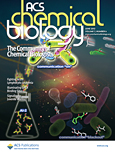
ACS Chemical Biology
Driving Innovation in Biochemistry and Molecular MedicineACS Chemical Biology is a premier journal published by the American Chemical Society, dedicated to advancing the understanding of the chemical underpinnings of biological systems. With an ISSN of 1554-8929 and a distinguished track record since its inception in 2006, this journal provides a vital platform for the dissemination of high-quality research in the realms of biochemistry and molecular medicine, achieving a prestigious Q1 ranking in these categories as of 2023. In an era where interdisciplinary approaches are crucial, ACS Chemical Biology fosters collaboration among chemists and biologists, reflecting a steadfast commitment to exploring the chemical processes that govern life. Although it does not operate under an open-access model, the journal maintains a rigorous peer-review process, ensuring the publication of influential studies that shape the future of chemical biology. With an increasing impact factor and a focus on innovative research, ACS Chemical Biology remains an authoritative resource for researchers, professionals, and students eager to engage with cutting-edge findings in this dynamic field.
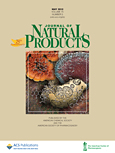
JOURNAL OF NATURAL PRODUCTS
Transforming Natural Resources into Scientific KnowledgeJOURNAL OF NATURAL PRODUCTS, published by the American Chemical Society, is a premier academic journal that focuses on the study and application of natural products in various scientific domains. With an esteemed ISSN of 0163-3864 and an E-ISSN of 1520-6025, this journal caters to a wide range of fields, including Analytical Chemistry, Complementary and Alternative Medicine, Drug Discovery, Molecular Medicine, Organic Chemistry, Pharmaceutical Science, and Pharmacology. The journal consistently ranks in the Q1 and Q2 quartiles across these categories, reflecting its significant contribution and rigorous standards in the scientific community. Notably, its Scopus rankings highlight its influence, with notable percentiles across various fields, including a 93rd percentile in Complementary and Alternative Medicine. The JOURNAL OF NATURAL PRODUCTS aims to advance knowledge in the field by publishing groundbreaking research articles, reviews, and critical insights, making it an essential resource for researchers, professionals, and students dedicated to exploring the vast potential of natural substances. This journal addresses complex challenges and fosters innovative developments, further establishing its place as a cornerstone in natural products research. Access to published articles may vary, underscoring the need for individuals in this field to stay connected with the latest advances through the journal's offerings.
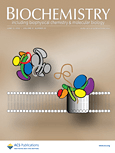
BIOCHEMISTRY
Pioneering discoveries that shape the future of biochemistry.BIOCHEMISTRY is a premier academic journal published by the American Chemical Society, dedicated to advancing the field of biochemistry through the dissemination of high-quality research. With an ISSN of 0006-2960 and an e-ISSN of 1520-4995, this esteemed publication has been a vital resource since its inception in 1962 and continues to contribute to the scientific community, boasting a remarkable Q1 ranking in the field as of 2023. The journal's well-curated content emphasizes fundamental biochemical research, molecular genetics, and innovations in biochemical techniques, catering to a diverse audience of researchers, professionals, and students. Although not an open-access publication, BIOCHEMISTRY plays a crucial role in facilitating knowledge exchange and fostering academic collaboration globally, making significant contributions to the understanding of the biochemical processes that underpin life.
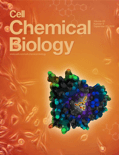
Cell Chemical Biology
Fostering Collaboration in Cutting-Edge Scientific Research.Cell Chemical Biology, published by Cell Press, stands at the forefront of interdisciplinary research in the realms of biochemistry, molecular biology, and pharmacology. With a robust impact factor evident in its prestigious Q1 quartile rankings across multiple categories including Clinical Biochemistry and Drug Discovery for 2023, this journal serves as a critical platform for disseminating cutting-edge scientific discoveries. As an Open Access publication, it ensures that vital research is accessible to a wide audience, fostering collaborations and driving innovation in the life sciences. Based in the United States, and featuring publications from 2016 to 2024, Cell Chemical Biology invites researchers, professionals, and students alike to contribute to its mission of advancing knowledge through rigorous peer-reviewed articles that address both fundamental and applied aspects of chemical biology.

LIPIDS
Advancing lipid science for a healthier tomorrow.LIPIDS is a renowned peer-reviewed journal published by Wiley, dedicated to the field of lipid research, encompassing biochemistry, molecular biology, and organic chemistry. With its roots dating back to 1966 and a commitment to advancing knowledge until 2024, this journal serves as a vital platform for sharing significant findings in lipid biochemistry and its applications in health and disease. Although it currently does not offer Open Access options, it maintains a respectable standing with a Q3 ranking in Biochemistry and Organic Chemistry, and a Q4 ranking in Cell Biology based on the 2023 category quartiles. Additionally, its Scopus rankings reflect a solid position within the organic chemistry and biochemistry subfields. Published from Germany, LIPIDS caters to researchers, professionals, and students eager to explore the roles of lipids in biological processes and innovatory applications in various scientific disciplines.

JOURNAL OF ASIAN NATURAL PRODUCTS RESEARCH
Transforming Nature's Gifts into Scientific BreakthroughsJOURNAL OF ASIAN NATURAL PRODUCTS RESEARCH is a prestigious publication in the field of natural products, focusing on valuable research spanning analytical chemistry, pharmacology, and complementary medicine. Published by Taylor & Francis Ltd in the United Kingdom, this journal has established itself as a key resource for academics and professionals seeking to explore advancements in drug discovery and organic chemistry. With a converged publication timeline from 1998 to 2024, the journal boasts several commendable category quartiles as of 2023, reflecting its robust standing in the research community: Q2 in Complementary and Alternative Medicine, Q3 in multiple domains including Analytical Chemistry and Organic Chemistry, and Q4 in Molecular Medicine. Although it currently does not offer open access, the journal remains a valuable compendium for empirical research and innovative studies in areas such as pharmacology and medicinal chemistry. Researchers, professionals, and students alike will find the JOURNAL OF ASIAN NATURAL PRODUCTS RESEARCH to be an essential platform for sharing groundbreaking findings and fostering collaborations that lead to significant advancements in science and health.

Peptide Science
Advancing peptide knowledge for a transformative future.Peptide Science, published by Wiley, is an esteemed journal dedicated to advancing the understanding of peptide chemistry and its applications across various scientific disciplines, including biochemistry, biophysics, and organic chemistry. Since its inception in 2018 and continuing through 2024, this journal has provided an essential platform for the dissemination of innovative research, engaging articles, and critical reviews. With an impressive Q3 ranking in the fields of Biochemistry and Biomaterials, and a Q2 status in Biophysics and Organic Chemistry as of 2023, Peptide Science acknowledges its integral role in addressing significant scientific challenges. This open-access journal ensures that findings are readily available to a global audience, fostering collaboration and knowledge sharing among researchers, professionals, and students alike. The journal exemplifies excellence in scholarly communication, making it an essential resource for anyone interested in the intricate world of peptide research.